Magpie Pouter Pigeon: The English Queen
The Magpie Pouter pigeon is a highly sought-after fancy breed. It has the appearance of royalty and stands tall over other members of its species. The unique features make it one of the perfect exhibition breeds.
A slender build and strong, erect posture set the Magpie Pouter apart from other pigeons. The pigeon has an uncanny resemblance to the Magpie due to the arrangement and color contrast of its feathers. Its large inflatable pouch on the neck adds more to its uniqueness.
Have you been mesmerized by the majestic beauty of the Magpie Pouters you saw at a pigeon show? Well, you can raise a pair too. Follow this discussion to learn how.
Magpie Pouter Pigeon Profile
| Name | Magpie pouter Pigeon |
|---|---|
| Scientific Name | Columba livia Var. Magpie |
| Common Names | English Magpie Pigeon |
| Origin | 18th Century England |
| Size | 40 cm (noticeably taller than the average pigeon) |
| Weight | 300 grams |
| Lifespan | Ten years on average, but can increase with optimum care. |
| Physical Features | ● Small round head ● Stout and curved beak ● Expressive eyes with red/orange iris ● Long slender neck ● Narrow chest ● Slim abdomen and flat back ● long pointy wings and fan-shaped rounded tail ● Feathered/Non-feathered feet |
| Temperament | Non-aggressive |
| Behavior | Gentle and friendly |
| Special Features | ● Large inflatable pouch/crop on the neck. ● Feathers have a metallic shine ● Tall-slender appearance |
| Breeding and Maintenance | ● 5-6 broods a year (1-2 eggs each) ● No too demanding, but requires basic care. |
| Common or Popular Varieties | German Magpie Pouter Pigeon |
Interested in similar topics on pigeon breed:
Overview
The Magpi Pouter is a breed of a fancy pouter pigeon. They are also widely known as the English Magpie Pouter. As the name tells you, these pigeons are pouters. In other words, they have a large inflatable sac on their neck.
These pigeons strongly resemble the magpie bird. For instance, they, too, have black and white (or similarly contrasting) bodies and a metallic shine to their feathers.
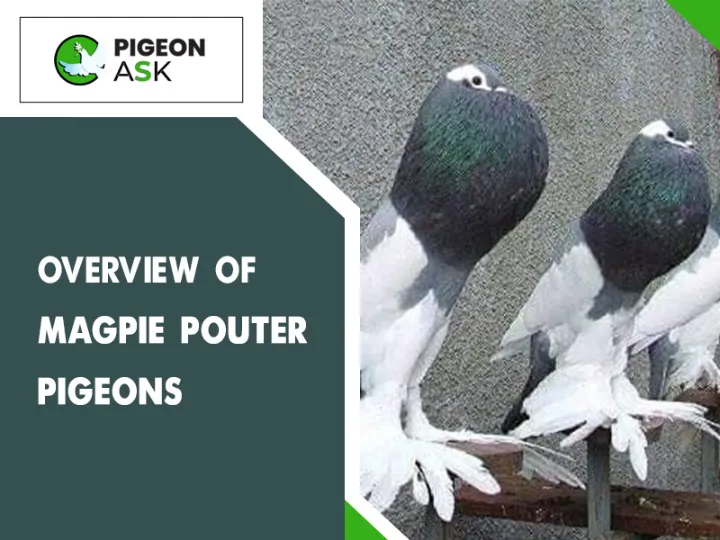
There are even magpie-like markings on their head and body. Henceforth, the name Magpie Pouters.
English magpie pouter pigeons were first recorded during the early 1900s. Their ancestors were tumbler pigeons from Germany.
Pigeon fanciers in England bred these German Pigeons with the French Baghdad Pigeons. After some years of careful and selective breeding, the English Magpie Pouter emerged.
Pigeon fanciers adore these birds for their unique beauty, posture, and appearance. It has a strong elegant erect posture.
Plus, it has a slim, slender build and is noticeably taller than the average pigeon. The English call this breed the ‘Queen of Pigeons’ for its elegant features.
A close variant of the English Mapgi Pouter is the German Magpie Pouter. Many pigeon enthusiasts on the net don’t discriminate between the pigeon’s English and German Origins.
They tend to put both birds in a common category of Magpi Pouter. However, both are different breeds, and the English variant is the most sought-after.
Physical Characteristics And Features
The English Magpie Pouter’s high demand is mostly due to its physical characteristics.
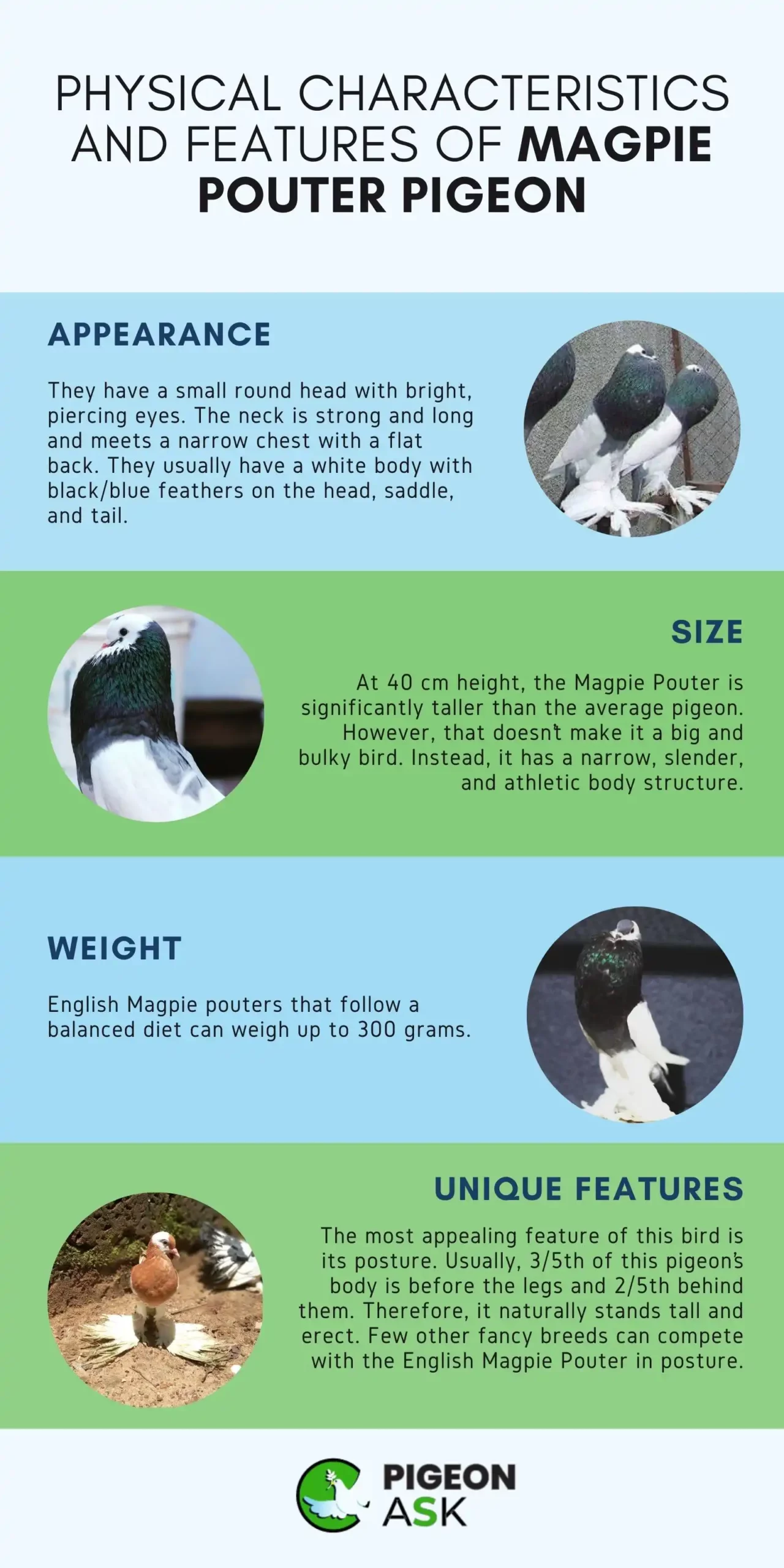
Learn which features make it a major attraction at pigeon shows. You should seek these characteristics when selecting breeding pairs.
Appearance
Amidst a group of common pigeons, an English Magpi Pouter would definitely look like royalty. They have a small round head with bright, piercing eyes.
The neck is strong and long and meets a narrow chest with a flat back. They usually have a white body with black/blue feathers on the head, saddle, and tail.
Size
At 40 cm height, the Magpie Pouter is significantly taller than the average pigeon. However, that doesn’t make it a big and bulky bird. Instead, it has a narrow, slender, and athletic body structure.
Weight
English Magpie pouters that follow a balanced diet can weigh up to 300 grams.
Unique Features
The Magpie-like colors and feather distribution is one of the most unique features of this pigeon.
Their well-developed neck pouches also draw much attention, especially when they are pouting. Still, their pouches might not be fully globular and aesthetic like some breeds of pygmy pouters.
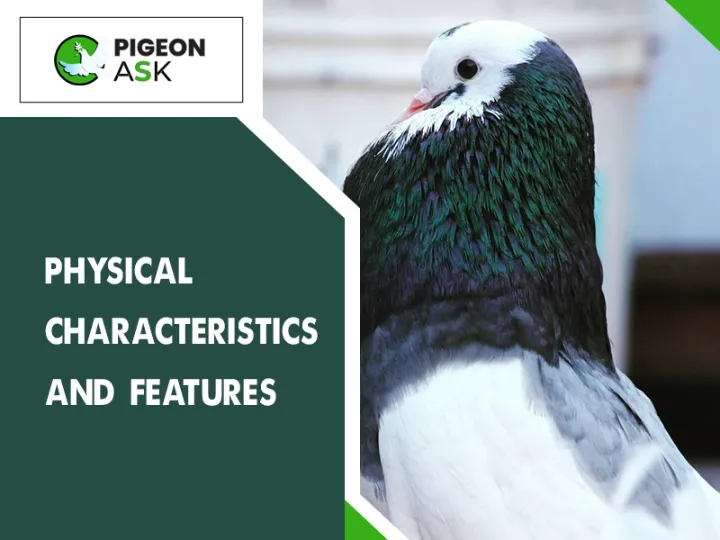
However, the most appealing feature of this bird is its posture. Usually, 3/5th of this pigeon’s body is before the legs and 2/5th behind them.
Therefore, it naturally stands tall and erect. Few other fancy breeds can compete with the English Magpie Pouter in posture.
Common Variations
A close relative of the English Magpi is the German variant. The German Magpie Pouter doesn’t have such an erect posture. It has only 2/3rds of its body before the legs.
These are also a more primitive breed than other pigeons. They have larger crops than the English pigeon and feather feet.
The Magpie Pouter Pigeon, with its distinct black and white plumage and inflated crop, is a captivating breed within the pouter pigeon family.
But beyond the standard black and white, a vibrant spectrum of variations adds to the breed’s charm and complexity.
Let’s delve into some of these fascinating variations –
1. Classic Black and White
The classic black and white Magpie Pouter Pigeon is the most recognizable variation.
It’s stark contrast between the black head, wings, and tail and the white body creates a striking visual effect, reminiscent of a magpie bird.
This variation is often preferred for exhibition purposes due to its adherence to the breed standard.
2. Chocolate and White
The chocolate and white variation offers a softer, warmer alternative to the classic black and white.
Here, the black is replaced with a rich, chocolate brown, creating a gentler contrast with the white body. This variation is gaining popularity for its unique beauty and elegance.
3. Blue and White
For a cooler and more subdued look, the blue and white variation is a delightful choice. A crisp, slate blue replaces the black, creating a serene contrast with the white body feathers.
This variation is particularly sought after for its calmness and gentle demeanor.
4. Red and White
For a more vibrant and energetic appearance, the red and white variation is a striking option.
The red, ranging from a deep maroon to a fiery crimson, replaces the black, creating a bold contrast with the white body. This variation is sure to turn heads and attract attention.
5. Splash
The splash variation adds a touch of whimsy to the Magpie Pouter Pigeon.
Here, the black or other primary color is splashed irregularly across the white body feathers, creating a unique and unpredictable pattern.
This variation is popular among breeders who appreciate its individuality and charm.
6. Self-Colored
For a solid and uniform look, self-colored Magpie Pouter Pigeons are available. These birds are entirely black, red, chocolate, or blue, without any white markings.
This variation is often preferred for breeders who focus on specific color breeding programs.
7. Other Variations
In addition to the variations mentioned above, several other rarer variations exist, including –
- Dun and White: With a soft, light-brown background color and white markings.
- Silver and White: Featuring a silvery gray instead of black.
- Grizzle: With a mixture of black and white feathers creating a speckled effect.
- Barred: With black bars running across the white body feathers.
Distribution And Habitat
The English Magpie Pigeons are domesticated birds. Therefore, their habitat preferences are mostly similar to that of domesticated pigeons. As an aspiring pigeon breeder, you must have a clear understanding of these.
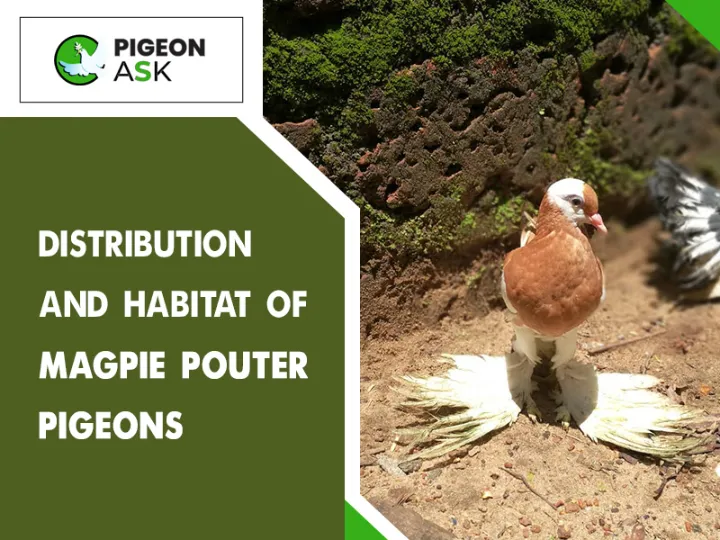
Geographic Distribution
The Magpi Pouters are a European breed. However, the love and admiration of pigeon fanciers has helped the bird to spread across the whole world.
The most authentic, elegant, and purebred English Magpie Pouters are still exclusive to England. Magpie Pouters in other parts of the world are often crossbred and might lack some of the features of the English bird.
Habitat Preferences
A clean, dry, spacious, and warm loft with proper ventilation and lighting is the ideal abode for the Magpi Pouters.
Keep plenty of feeders and nest boxes in the lofts to avoid competition between the pigeons. These birds can thrive in both urban and rural settings.
Migration and Seasonal Movements
Being a domesticated bird, the Magpi Pouter doesn’t migrate. It will stay with its owner for life. The birds might become feral if abandoned.
Magpi Pouters are hardy birds with excellent foraging abilities. So, they might survive longer than other fancy pigeons in the wild.
Threats and Conservation Status
The English Magpie is a widely adored and in-demand breed of fancy pigeon. Therefore, the pigeon isn’t endangered, and there’s no active movement for its conservation.
Behavior And Traits of Magpie Pouter Pigeons
Like other fancy breeds the Magpie Pouter pigeons are gentle and social birds. They aren’t a danger to children or other pairs living with them. You will find them cheerful and chatty but not annoyingly noisy.
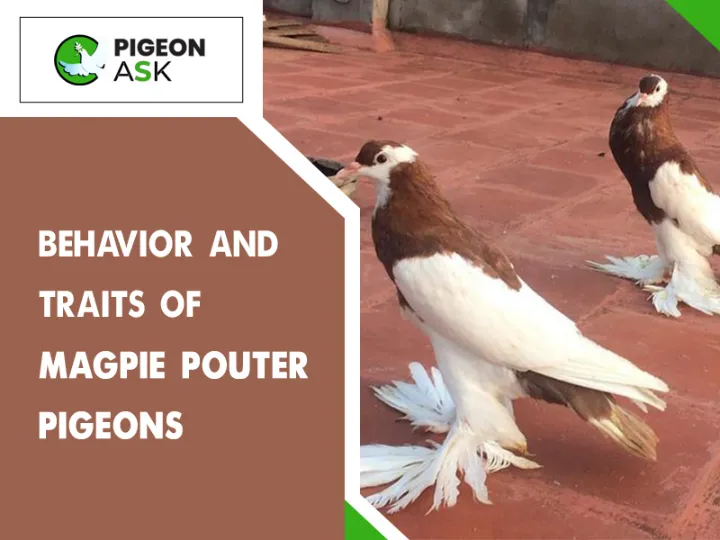
Common Personality Traits
The English Magpie Pouter truly deserves its association with royalty. It’s non-aggressive but still strong and confident. They show curiosity about their surroundings and like to explore.
Their gentle nature makes them easy to tame and handle during exhibitions.
Diet
The major portion of the Magpie Pouters diet is made up of seeds and grains. These foods provide the pigeons with the necessary minerals and nutrients they need for development.
You can also include some vegetables in the pigeon’s diet and fruits for treats.
Flight
Originally, Magpie Pouters were strong flying tumblers. However, English breeders were more interested in these birds’ beauty features.
As a result, years of selective breeding have hindered the pigeon’s flying abilities. They might fly short distances for a while but cannot race or travel long distances.
Nesting, Breeding, and Courtship
The male Magpie Pouter catches the female’s attention by pouting, strutting, cooing, and bowing its head. Once the female responds, the two mate for life.
They would build a nest to lay eggs in the nest boxes with feathers, twigs, and similar available materials. You can expect 5-6 broods a year with proper care.
Lifespan
Usually, a Magpie Pouter can live for ten years. Birds which live in the best conditions and have good genes might live five years more.
Homing Instinct
The exclusively domesticated Magpie Pouters don’t have a strong homing instinct. You can expect them to fly back to their loft from short distances, but not if you leave them somewhere far away.
Difference Between English Magpie Pigeon and Magpie Pouter Pigeon
| Feature | English Magpie Pigeon | Magpie Pouter Pigeon |
|---|---|---|
| Size | Medium-sized | Large-sized |
| Body Shape | Compact | Elongated |
| Neck | Well-developed, medium length | Longer, slender |
| Posture | Upright with slightly arched back | Lower stance, less arched back |
| Crop Inflation | Not prominently inflated | Well-pronounced pouter posture |
| Plumage | Black and white piebald with distinct marks | Black and white piebald, more even distribution possible |
| Head, Wings, Tail Color | Black with white markings | Black with possible white head markings |
| Flight Feathers | White with black bars | White with black bars |
| Legs and Feet | Black | Unfeathered |
| Origin | Germany, Brittain | Belgium |
Additional Differences
English Magpie Pigeons are generally considered more active and livelier, while Magpie Pouter Pigeons are known for being calmer and more docile.
And the English Magpie Pigeons are good fliers, while Magpie Pouter Pigeons are not as strong flyers due to their larger size and pouter posture.
Breeding And Maintenance of Magpie Pouters
Proper care is key to owning healthy Magpi Pouters. These are not high-maintenance birds. But you have to put in some extra work if the goal is to get 5-6 successful broods a year.
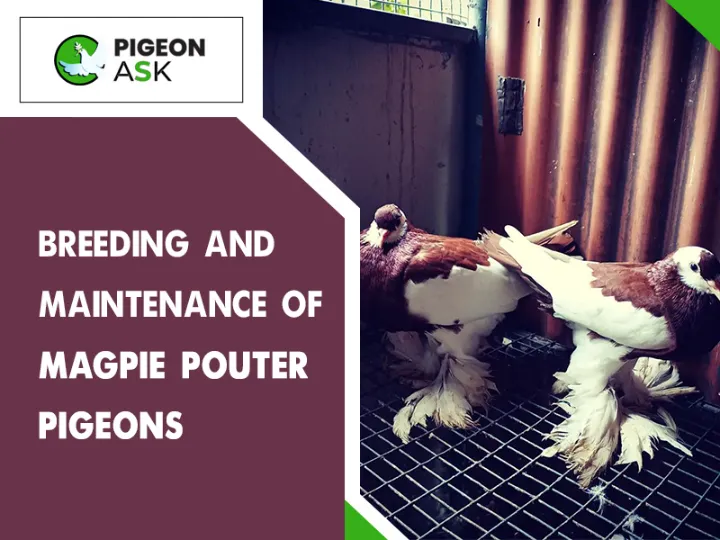
Dietary Requirements
The Magpie pigeon feeds on a standard pigeon diet. However, the food items should be of the highest quality for the development of the desired physical traits.
As mentioned earlier, almost 70% of the pigeon’s diet will be grains and seeds. You should mix a wide variety of grains and seeds to prevent nutritional deficiencies.
Wheat, corn, and sorghum are some of the best grains. Meanwhile, sunflower, safflower, and hemp are highly recommended seeds.
Vegetables make up around 15% of the pigeon’s diet. Spinach, kale, lettuce, and similar greens can keep the pigeons hydrated and provide them with antioxidants. You can occasionally treat the pigeons to fruits like apples or grapes.
Grit is essential for digestion. You can crush charcoal and oyster shells to prepare the grit. This will also help with the pigeon’s calcium demands. Lastly, ensure plenty of clean and fresh water for the pigeons.
Housing Requirements
Build a spacious loft for your Magpi Pouters. Try to provide 2-3 square feet of floor space for each pigeon. A loft as high as six feet might be enough for the birds to spread their wings and fly around.
You might need slightly bigger nest boxes since the Magpie Pouters are taller than the average pigeon. The number of nest boxes must be more than the number of pairs you are keeping.
Keep the loft dry and clean to prevent parasitic diseases. Apply sawdust or absorbent material on the floor. Maintain a temperature of 65-70F in the loft. Allow air circulation and secure any gaps to prevent the entry of cold wind.
Tips for Successful Breeding
The first requirement for successful breeding is proper diet and habitat. A poor diet and ill-maintained loft will discourage the Magpie Pouters from producing offspring. In addition to the primary requirement, here are a few more things to consider-
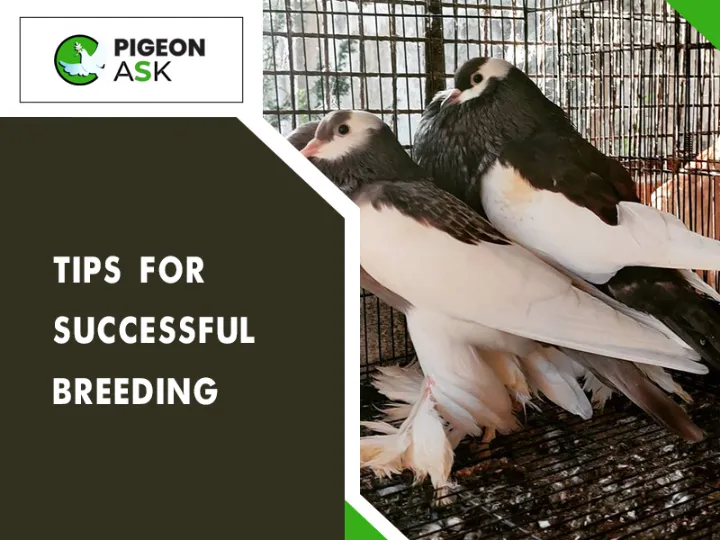
- Choose pairs with the desired physical characteristics and features. Low-quality stock is unlikely to produce better offspring.
- Provide tobacco stalks as nesting materials since they have anti-parasitic abilities. This will keep the hatchlings disease-free in their first few weeks of life.
- Separate a mating pair from the other birds to a quieter place. This will help the couple bond better and increase the chance of successful breeding.
- You can use artificial lighting to extend the duration of daytime. Longer daytime stimulates the pigeon’s fertility.
- Contact a veterinarian and maintain a vaccination schedule for your pigeons.
Final Words
The Magpi Pouter pigeon is a wonderful breed to raise. Your efforts for the pigeons might be rewarded in more than one way. Apart from keeping friendly and exotic pets, you can also make some extra income by selling off some of the pigeons.
A well-grown Magpie Pouter can sell for more than 300$. That’s all for this discussion. Did you find it helpful? In that case, share the knowledge with other pigeon fanciers across the internet.
Don’t forget to follow us on Facebook, Twitter, and Google News for more content like this.
